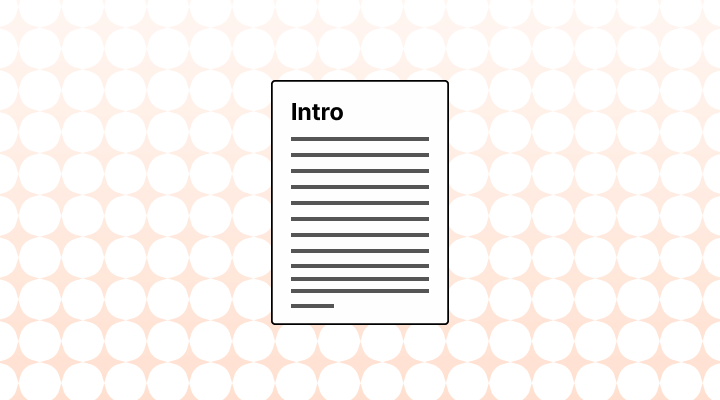The introduction to a research paper is akin to the opening act of a play—it sets the stage, captures the audience's attention, and provides a glimpse of what's to come.
Crafting a compelling introduction is a critical skill for any researcher or student. How to write an introduction for a research paper? In this blog post, we'll explore the essential elements and strategies to effectively write a research paper introduction that engages readers and sets the tone for your academic journey.
Steps:
- Start with a Hook
- Provide Context
- State the Problem or Research Question
- Present the Purpose and Objectives
- Outline the Structure
- Establish a Clear Thesis Statement
Step 1: Start with a Hook
The first sentence of your introduction should grab the reader's attention and pique their interest. This can be achieved through a thought-provoking question, a surprising fact or statistic, a relevant anecdote, or a compelling quote. The goal is to make readers want to continue reading to find out more.
Who comprises your target audience?
What is the main focus of your paper?
How can you captivate your audience's attention regarding the subject matter?
Step 2: Provide Context
After hooking your readers, it's essential to provide context for your research. Explain the broader topic or field your study falls within and why it's relevant or important. This contextual information helps readers understand the significance of your research and its place in the larger academic conversation.
What have other researchers said about the topic?
What is the field’s overall view of the topic?
What do readers need to know to understand your research?
Step 3: State the Problem or Research Question
In the introduction, clearly state the research problem or question that your paper addresses. Be concise and specific. Your research question should serve as the focal point, guiding readers toward the main purpose of your study.
Why should readers care about your topic?
Step 4: Present the Purpose and Objectives
Following the research question, outline the purpose of your study and its objectives. Briefly mention the goals and outcomes you hope to accomplish through your investigation. This helps readers understand the direction and scope of your paper.
What do you aim to achieve with your research?
What should readers take away from your paper?
Step 5: Outline the Structure
Give readers a roadmap of what to expect in the rest of your paper. Briefly outline the main sections and subtopics that you'll cover. This helps readers anticipate the organization of your research and how you plan to address the research question.
Step 6: Establish a Clear Thesis Statement
Towards the end of your introduction, culminate the introductory section with a clear and concise thesis statement. This statement should articulate the main argument or hypothesis of your research. It serves as the compass that guides your paper and informs readers of what you will be proving or discussing.
More information on thesis statement: How to write a Research Paper: A Thesis Statement
Don't forget to...
Keep it Concise and Focused
While it's important to provide context and engage your readers, remember that brevity is key. Avoid unnecessary details and tangents in your introduction. Stay focused on the main elements: the hook, context, problem statement, purpose, structure, and thesis statement.
Revise and Refine
Once you've written your introduction, revisit it during the editing phase of your research paper. Ensure that it aligns seamlessly with the rest of your paper and reflects any changes or refinements made to your research along the way.
How can Engram help?
Accuracy is key in delivering a compelling introduction. Engram's AI grammar proofreader can help you catch any misspellings and grammatical and syntax error, so that you paper is polished and free of any errors.
In conclusion, crafting an effective research paper introduction requires a delicate balance of engaging the reader and providing essential context. A well-structured introduction not only captivates your audience but also sets the stage for a well-organized and coherent research paper. By following these steps and investing time in careful planning and revision, you can create an introduction that makes a lasting impression and propels your research paper to success.
Want to sound like a native speaker?
Engram’s AI-powered grammar checker makes your English sound like a native speaker’s, suggesting natural English expressions on top of fixing grammar, spelling, punctuation, word order, and vocabulary.













